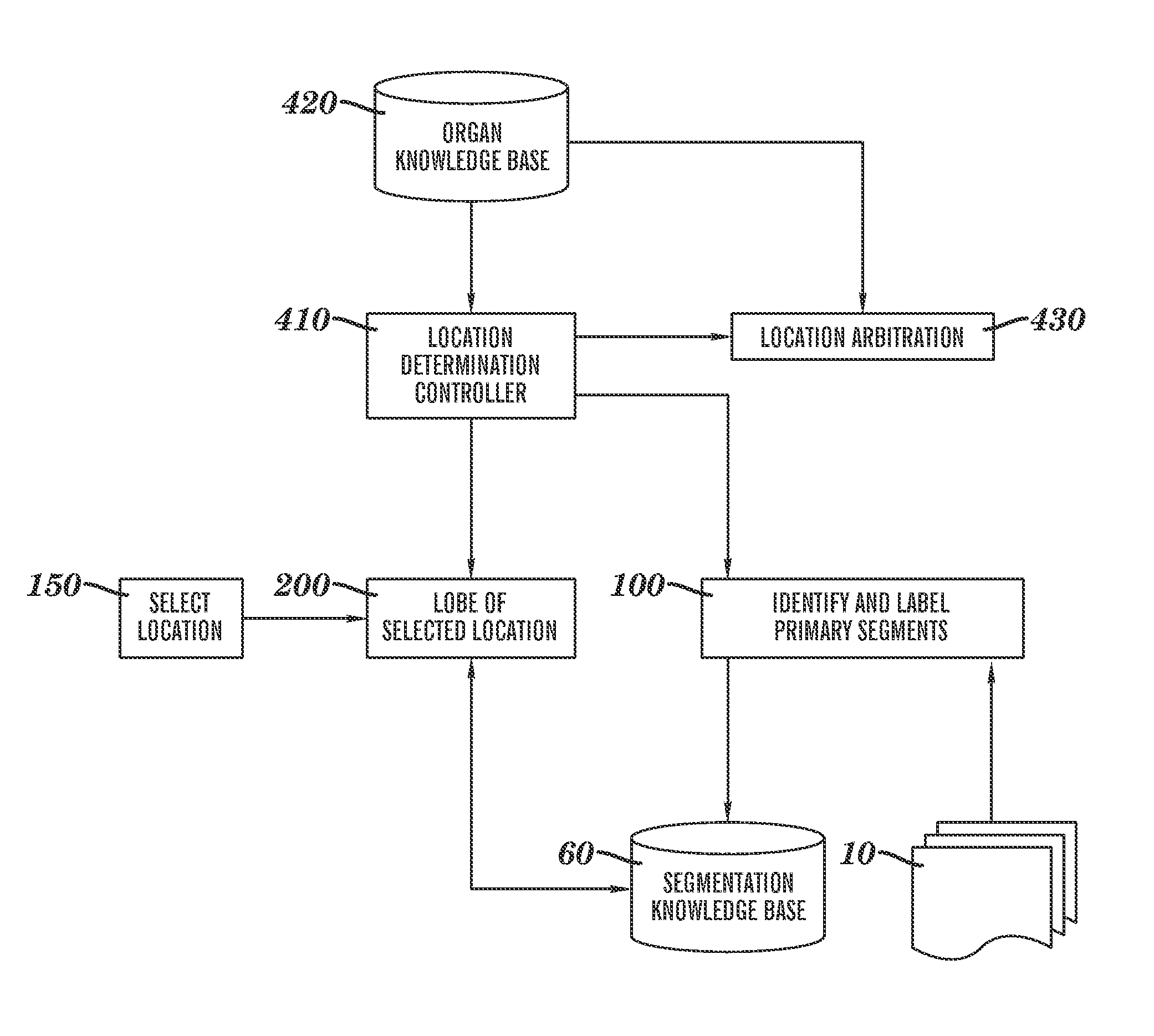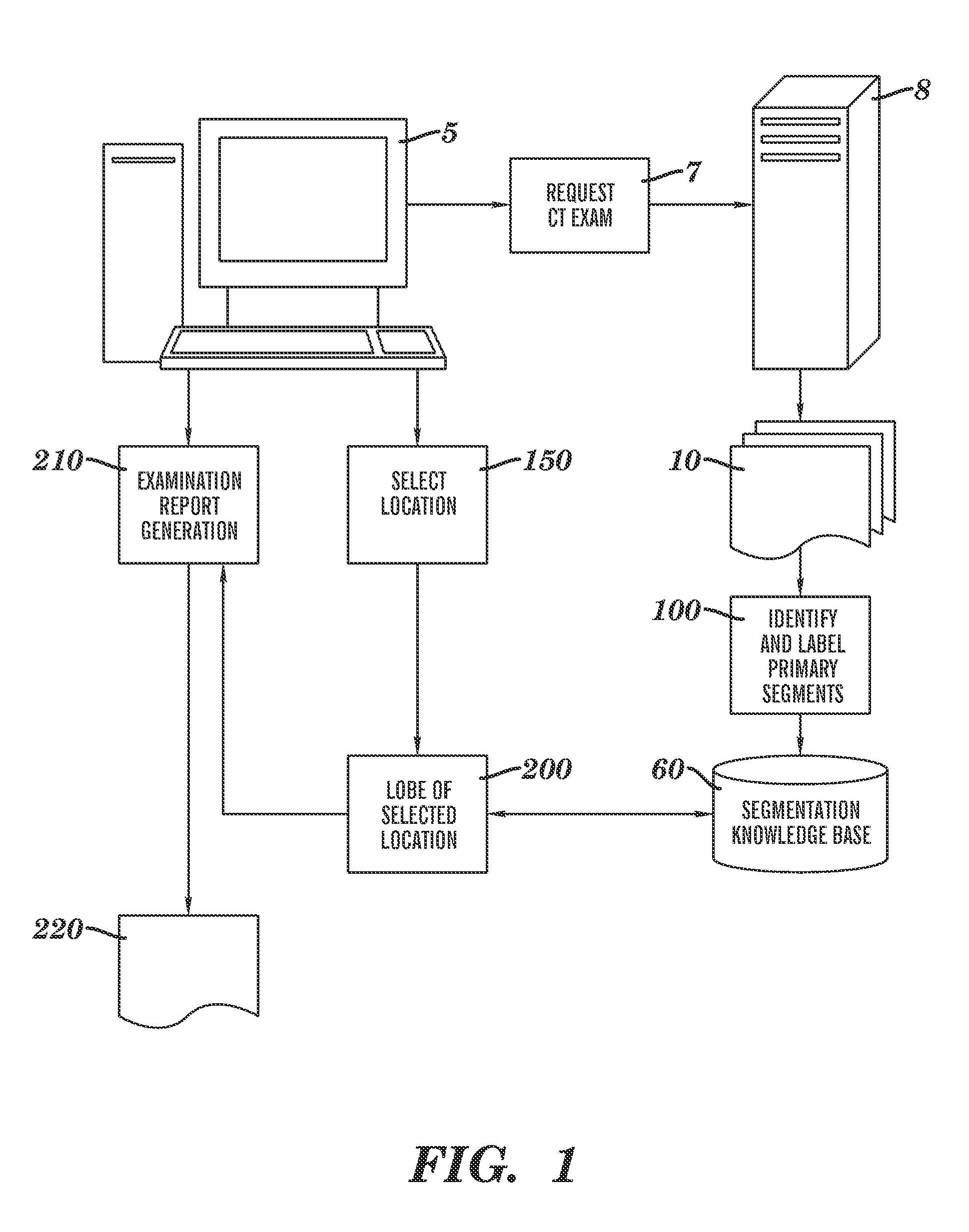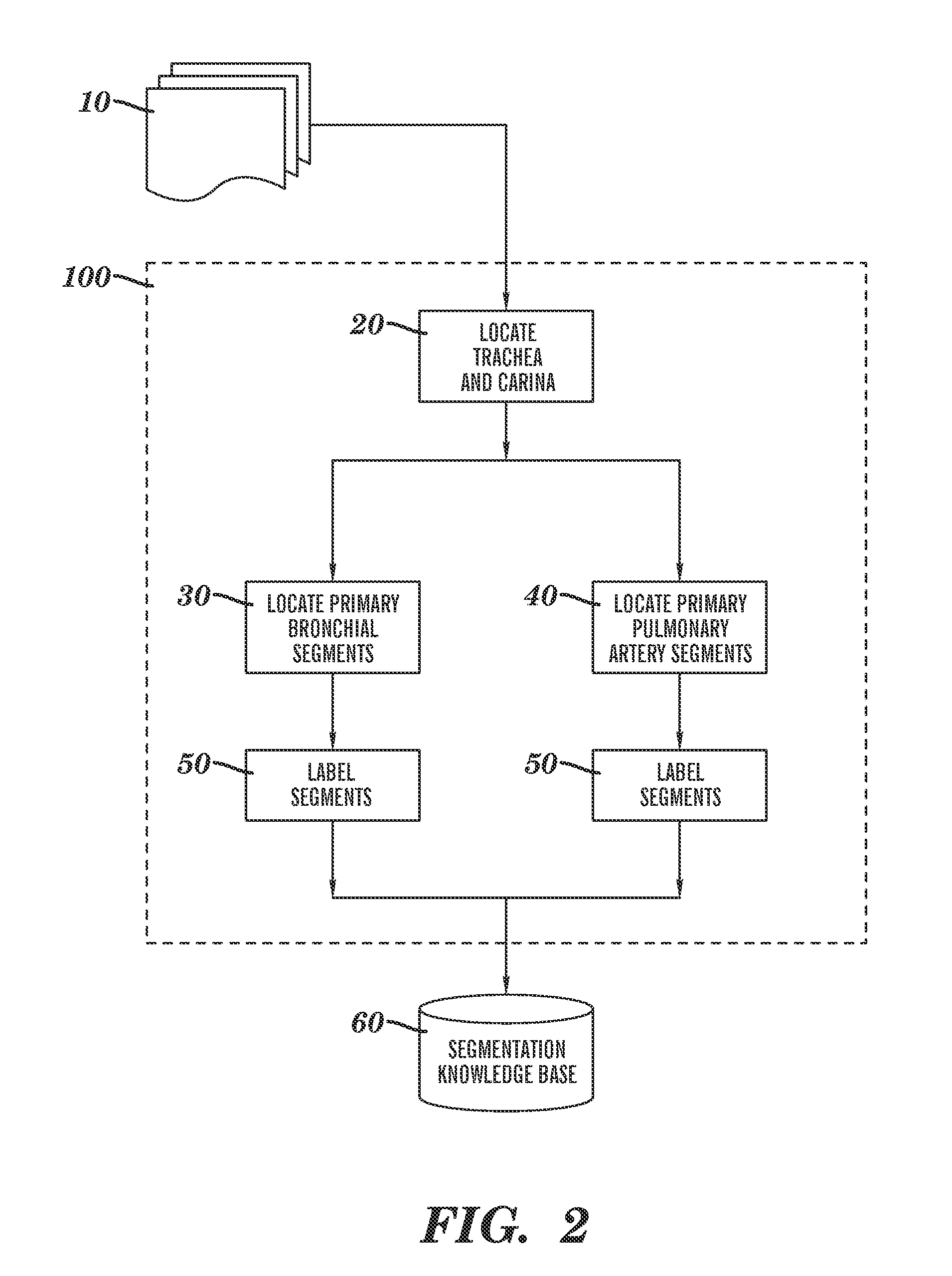Method for lung lesion location identification
a technology for lung lesion and location identification, applied in the field of digital imaging, can solve the problems of requiring additional time, affecting the accuracy of lung lesion location identification,
- Summary
- Abstract
- Description
- Claims
- Application Information
AI Technical Summary
Benefits of technology
Problems solved by technology
Method used
Image
Examples
Embodiment Construction
[0031]Reference is made to commonly-assigned co-pending U.S. patent application Ser. No. 11 / 567,857, filed Dec. 7, 2006 entitled ANALYZING LESIONS IN A MEDICAL DIGITAL IMAGE, by Simon et al., the disclosure of which is incorporated herein.
[0032]As disclosed in the background above, the embodiments of the pre-sent invention can be applied broadly to anatomical organs and organ systems of interest in cases where there are associated to the organs or systems a hierarchical vessel tree structure that supplies, for example, blood or ambient air with oxygen. Some of the detailed description below will be specified to the case of the human lungs for purposes of concrete illustration. It will be clearly understood by persons skilled in the ordinary art that such specification is performed for teaching purposes only, does not restrict the application of the invention to other qualifying organs or organ systems, nor does such specification preclude the use of the invention in the field of non...
PUM
 Login to View More
Login to View More Abstract
Description
Claims
Application Information
 Login to View More
Login to View More - R&D
- Intellectual Property
- Life Sciences
- Materials
- Tech Scout
- Unparalleled Data Quality
- Higher Quality Content
- 60% Fewer Hallucinations
Browse by: Latest US Patents, China's latest patents, Technical Efficacy Thesaurus, Application Domain, Technology Topic, Popular Technical Reports.
© 2025 PatSnap. All rights reserved.Legal|Privacy policy|Modern Slavery Act Transparency Statement|Sitemap|About US| Contact US: help@patsnap.com



